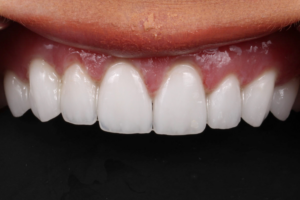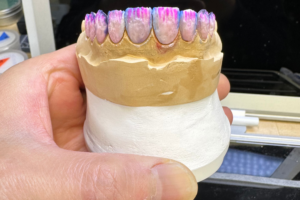 Buspar Withdrawal: Symptoms and Tapering Strategies
Buspar Withdrawal: Symptoms and Tapering Strategies
Recognizing Common and Surprising Cessation Symptoms ⚠️
I remember the first week after stopping Buspar: relief mixed with odd sensations at night. Some effects are common—anxiety rebound, insomnia, dizziness, nausea—while others are subtle, like brain fog, emotional numbness, or sensitivity to light and sound. Clinically, these arise as the nervous system adjusts; symptoms vary widely with dose and duration, and can surprise even experienced patients, truly.
Keep a symptom log and watch patterns; relapse risk rises if you rush changes or ignore persistent signs. Simple measures—hydration, regular sleep, gentle activity, grounded breathing—help. If symptoms are severe, contact the prescriber for a measured taper. Remember recovery follows patience and informed steps, not sudden fixes; Occassionally you may need structured support to acheive stability.
Timeline of Symptoms after Stopping Medication 📅

In the days after stopping buspar many people notice jittery anxiety, dizziness, nausea and sleep disruption within 24–72 hours. Symptoms can feel sudden and disorienting, often peaking during the first week as your body recalibrates; this early window is when support and hydration matter most.
Over the next weeks some signs fade while others linger; mood swings, irritability and sleep problems persist or reoccur. Occassionally symptoms endure for months, after abrupt stops. Track changes, keep in touch with your prescriber, and follow a gradual taper plan to reduce relapse risk.
Factors That Raise Symptom Risk and Severity 🔍
When people stop buspar, individual context shapes how intense withdrawal feels. Past response to anxiety meds, length of use, dose, and abruptness of change all influence symptom risk, and even genetic or metabolic differences can make effects unpredictable. Life stressors, sleep loss, and concurrent alcohol or recreational drug use amplify sensations; social isolation and poor nutrition reduce resilience. Clinicians often flag rapid discontinuation as a key trigger.
Understanding these variables helps craft safer tapers: slower reductions, monitoring for rebound anxiety, and taper pauses if severe symptoms occur. Older adults and those with coexisting depression or chronic pain often require more gradual plans. Occassionally, switching to longer-acting agents under supervision can ease transitions. Clear communication, tracking symptoms, and involving family or therapists lowers relapse risk and makes the withdrawal journey more manageable and less frightening and improves long-term mental health outcomes.
Evidence-based Gradual Dose Reduction Plans and Tips 📉

A story: Maria slowly reduced her buspar dose while tracking sleep and mood, learning that patience mattered more than speed. Clinicians often suggest modest stepwise decreases tailored to each person, with longer intervals when symptoms surface.
Common approaches use percentage-based reductions—about 10–25% decrements—followed by 2–4 week observation periods; slower pacing suits those with prior withdrawal. Pill-splitting, liquid formulations, or compounding can help acheive precise doses and comfort during transitions.
Keep a daily symptom log and schedule regular check-ins; adjust the slope of taper if dizziness, anxiety, or insomnia recur. Occassionally, a brief pause or small increase stabilizes progress without abandoning goals.
Combine pragmatic supports: sleep hygiene, low-dose CBT techniques, hydration, and peer support. Always coordinate changes with a prescriber and seek urgent care for severe or persisting distress. Also review other medications, supplements, and alcohol use to minimize interaction risks.
Self-care, Coping Techniques, and Relapse Prevention 🧠
I remember feeling fragile when my doctor suggested tapering buspar; small routines became anchors. Start by planning gentle rituals—consistent sleep, brief walks, hydration—and track moods so you notice patterns rather than panic. Gentle creativity or journaling helps label sensations and reduce catastrophizing.
Build relapse prevention by making gradual steps, sharing your plan with a trusted friend or clinician, and scheduling check-ins. Use grounding breaths and distraction techniques when cravings spike, and celebrate small wins. If severe withdrawal signs flare, seek prompt medical advice to adjust Teh taper before symptoms intensify.
When to Seek Help and Professional Guidance 🤝
Imagine sitting with a clinician, tracing the jagged path of sleep loss, dizziness, or panic that followed stopping Buspirone; that scene helps you judge when symptoms outstrip self-care. If distress is severe, worsening, or includes thoughts of harming yourself, contact a prescriber or emergency services immediately. Seek prompt review also for new uncontrolled shaking, fainting, high fever, or chest pain — signs that require urgent medical evaluation.
For planned tapering consult a prescriber, psychiatrist, or pharmacist to create a gradual reduction tailored to your dose, duration, and other medications. Ask for a written plan, monitoring schedule, and contingency steps if withdrawal resurfaces. Don't try abrupt changes when pregnant, breastfeeding, or taking interacting drugs; clinicians can help adjust safely and may recomend adjunctive therapies or therapy support. Recieve timely follow-up if symptoms persist beyond several weeks. Bring a trusted support person. MedlinePlus — Buspirone PubChem — Buspirone












